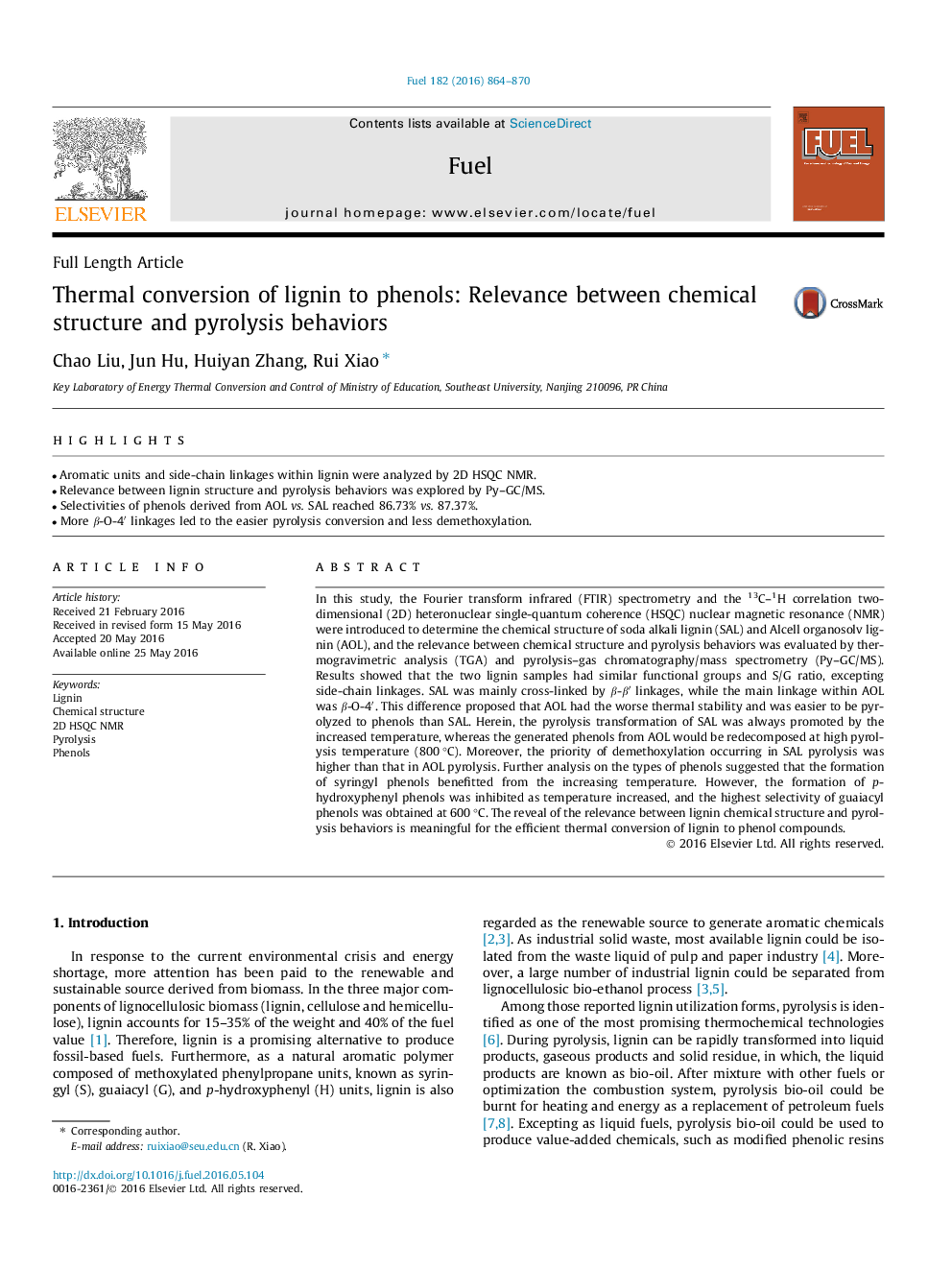| Article ID | Journal | Published Year | Pages | File Type |
|---|---|---|---|---|
| 6633596 | Fuel | 2016 | 7 Pages |
Abstract
In this study, the Fourier transform infrared (FTIR) spectrometry and the 13C-1H correlation two-dimensional (2D) heteronuclear single-quantum coherence (HSQC) nuclear magnetic resonance (NMR) were introduced to determine the chemical structure of soda alkali lignin (SAL) and Alcell organosolv lignin (AOL), and the relevance between chemical structure and pyrolysis behaviors was evaluated by thermogravimetric analysis (TGA) and pyrolysis-gas chromatography/mass spectrometry (Py-GC/MS). Results showed that the two lignin samples had similar functional groups and S/G ratio, excepting side-chain linkages. SAL was mainly cross-linked by β-βⲠlinkages, while the main linkage within AOL was β-O-4â². This difference proposed that AOL had the worse thermal stability and was easier to be pyrolyzed to phenols than SAL. Herein, the pyrolysis transformation of SAL was always promoted by the increased temperature, whereas the generated phenols from AOL would be redecomposed at high pyrolysis temperature (800 °C). Moreover, the priority of demethoxylation occurring in SAL pyrolysis was higher than that in AOL pyrolysis. Further analysis on the types of phenols suggested that the formation of syringyl phenols benefitted from the increasing temperature. However, the formation of p-hydroxyphenyl phenols was inhibited as temperature increased, and the highest selectivity of guaiacyl phenols was obtained at 600 °C. The reveal of the relevance between lignin chemical structure and pyrolysis behaviors is meaningful for the efficient thermal conversion of lignin to phenol compounds.
Related Topics
Physical Sciences and Engineering
Chemical Engineering
Chemical Engineering (General)
Authors
Chao Liu, Jun Hu, Huiyan Zhang, Rui Xiao,
